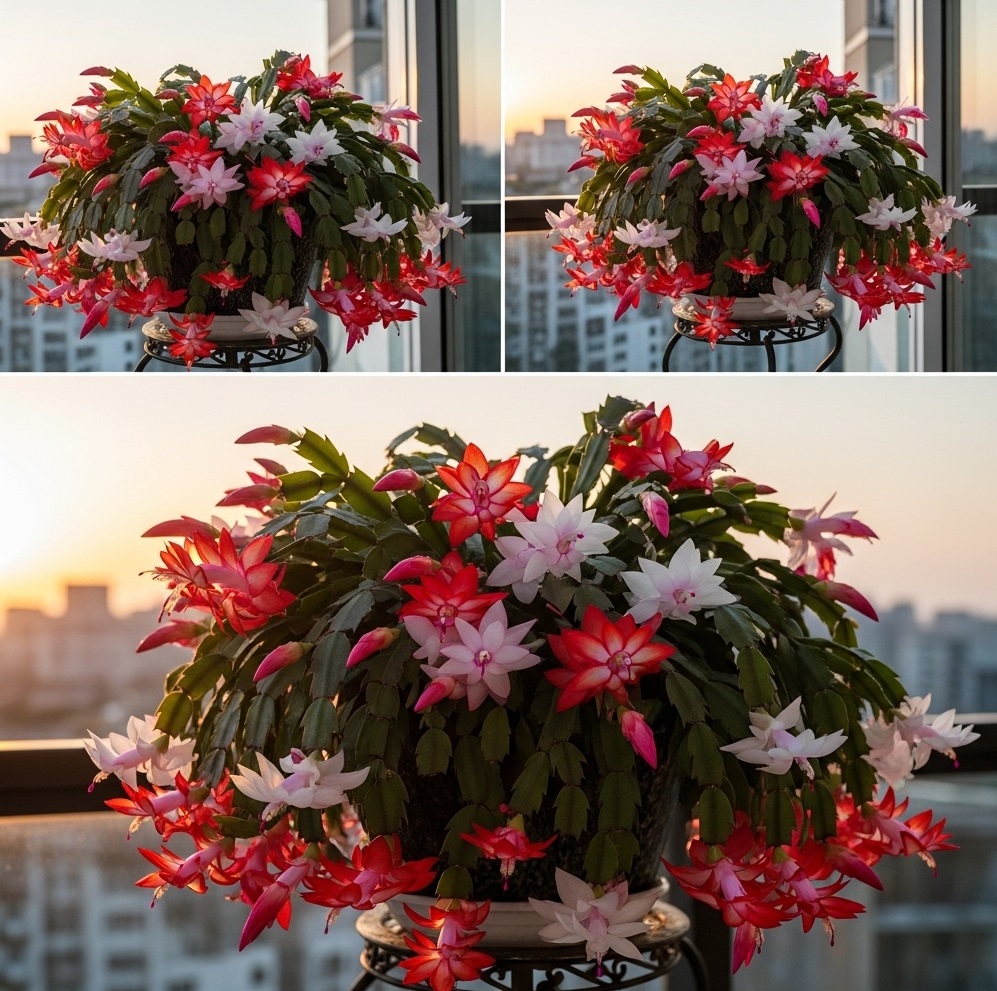In autumn, stop fertilizing to let the plant rest. Once flowering begins, you can start feeding again to sustain the blossoms and encourage healthy growth afterward.
5. Photoperiod: Darkness is the Secret Ingredient
One of the most fascinating aspects of the Christmas cactus is its dependence on light cycles. It’s a short-day plant, meaning that it blooms when nights are long and days are short. To trigger this natural process, ensure that starting in October, the plant experiences at least 12–14 hours of uninterrupted darkness each night.
You can achieve this by covering the plant with a dark cloth or moving it to a completely dark room during the evening. Avoid exposure to artificial light, even briefly, as it can interfere with bud development.
6. Repotting: Less is More
Many plant owners repot their Christmas cactus too often, which can actually delay blooming. This plant prefers to be slightly root-bound. Repot only when the roots completely fill the pot — usually every 2 to 3 years. Do this in spring, using a well-draining soil mix made of potting soil, compost, and sand or perlite. Choose a pot only slightly larger than the previous one to avoid excess moisture retention.
7. Drooping or Falling Buds: Common Causes and Fixes
If buds fall off before they open, don’t panic — it’s often due to environmental stress. The main causes include sudden temperature fluctuations, moving the plant during the budding stage, or inconsistent watering. To prevent this, maintain a stable temperature, avoid relocating the cactus once buds appear, and water evenly without extremes.
8. After Flowering: Preparing for the Next Cycle
Once the flowers fade, your Christmas cactus enters a recovery phase. Gently remove spent blooms and reduce watering for a few weeks. Continue to provide moderate light and a comfortable temperature. During this time, the plant replenishes its energy for the next flowering cycle. A short rest period now ensures a more impressive bloom later.
Extra Tips for a Healthy Plant
Pest control: Check regularly for small insects or spots on the leaves. Treat infestations early with a natural insecticide or by wiping the leaves with a damp cloth.
Clean leaves: Dust can block light and hinder photosynthesis. Wipe the foliage occasionally with a soft, moist cloth.
Stable environment: Avoid exposing the plant to cigarette smoke, heaters, or air conditioners. Sudden humidity or temperature changes can harm its delicate balance.
By following these simple yet powerful tricks, your Christmas cactus will reward you with spectacular blooms right when you need them most — during the festive season. With consistent care, attention to light, temperature, and rest cycles, this beautiful plant will continue to brighten your home and bring a touch of Christmas magic every year.
